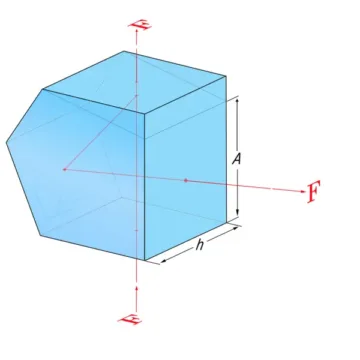-
A plano-convex lens is a convergent lens having one convex and one flat surface. These lenses are intended for use in infinite conjugate (parallel light) applications or for basic imaging in non-critical applications. Plano-convex lenses are designed for infinite conjugate use or easy imaging in non-critical applications. They are positive focal length elements with a flat and spherical surface. A lens can be convex, concave, or flat depending on its surface.
-
-
-
AG glass Windows is used on-screen to reduce sunlight/light reflection. The surface is etched by chemical to specified gloss, roughness and haze. A finished window might need post-treatment such as silk-screen printing, 3M double sides adhesive, heat tempered, coating. Please contact us for more information, supports or free samples.
-
An Aspheric Lens is one whose surface profiles do not resemble those of a sphere or cylinder. In comparison to a basic lens, Aspherical Lens can reduce or eliminate spherical aberration and also other optical distortions such as astigmatism. Main Applications of Our Aspherical Lens: - Collimator or condenser of the light source. - Collimator of laser. - Coupling lens to focus laser into an optical fiber. - Imaging
-
A special type of thick biconvex optical lens is a Ball lenses that usually has a sphere geometric shape. These are made of a single material such as BK7 or other optical glass/Fused Silica/CaF2 which is a commonly used material for ball lenses. The smallest lens we produced is < 0.5 mm. We can process ball lenses using all types of glass material. Our price for PV industry may be as low as USD0.02/pcs. We are developing CSD-based AR-coating to provide a low-cost PV-coating solution.
-
Beamsplitter Penta Prism is produced by bringing together a precision Penta Prism and a wedge prism and adding an appropriate interference coating to one of the typically reflective surfaces. Since minor motions of a Penta Prism do not influence the true right angle at which light rays are reflected, the difference between the light rays transmitted and reflected is highly controllable
-
Brewster Windows are windows that are meant to be used at Brewster's angle (usually uncoated). This is the angle at which only incident p-polarized light has 0% transmission loss. Instead of exterior mirrors, a Brewster window is an uncoated substrate positioned at Brewster's angle within a laser. This substrate works as a polarizer, allowing p-polarized light to enter and exit the window without reflection losses while reflecting s-polarized light. Features
- Perfect for Laser Cavities.
- A substrate with UV Fused Silica.
- Without Reflection Losses, P-Polarized Light is Transmitted.
-
Calcium Fluoride (CaF2) Windows have a high damage threshold and low absorption and are transparent from 180 nm to 8µm. It is a great choice for FTIR analysis, excimer laser systems, spectroscopic windows, and thermal imaging systems. Features:
- <1 arc-minute parallelism
- Ideally suited for excimer laser applications.
- Transparent in UV, visible, and infrared light.
- A low absorption rate and a high damage threshold
- In comparison to other IR materials, it has a low chromatic aberration.
-
- Z-OPTICS has big catalog of cylindrical lens off-the-shelf for quick delivery and provides quick sampling service for new drawings.
- Multiplicity of materials, Glass, Fused Silica, Sapphire, CaF2, ZnSe ….
- Innovative low cost plano convex cylindrical lens is available.
Overview
- Ready Stock: Z-Optics offers a large catalog of cylindrical lenses available for fast delivery and custom sampling for your unique designs.
- Material Multiplicity: Select from premium optical glass, fused silica, sapphire, CaF2, ZnSe, and more—a solution for every requirement.
- Cost-Effective Options: Innovative low-cost plano convex cylindrical lenses and specialized shapes for demanding optical applications.
-
Dove prisms are reflective prisms that are used to invert images. A truncated right-angle prism is used to build dove prisms. Roof prisms are commonly used in optical equipment like digital optoelectric products, imaging equipment, fingerprint systems, medical devices, precise digital control machinery and other optical fields, common science educational equipment, optical communication, etc.












